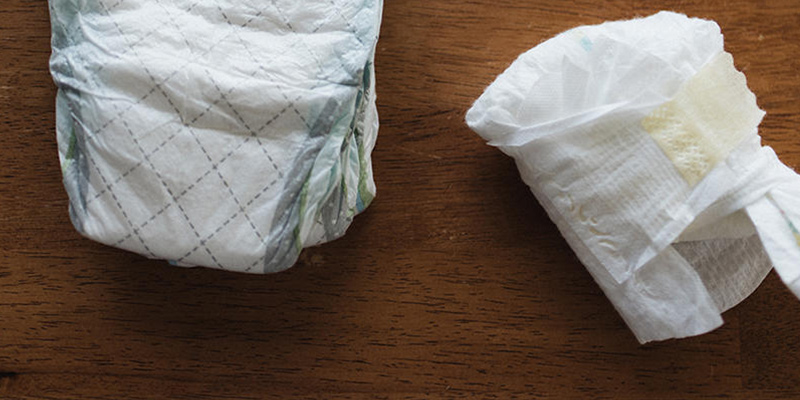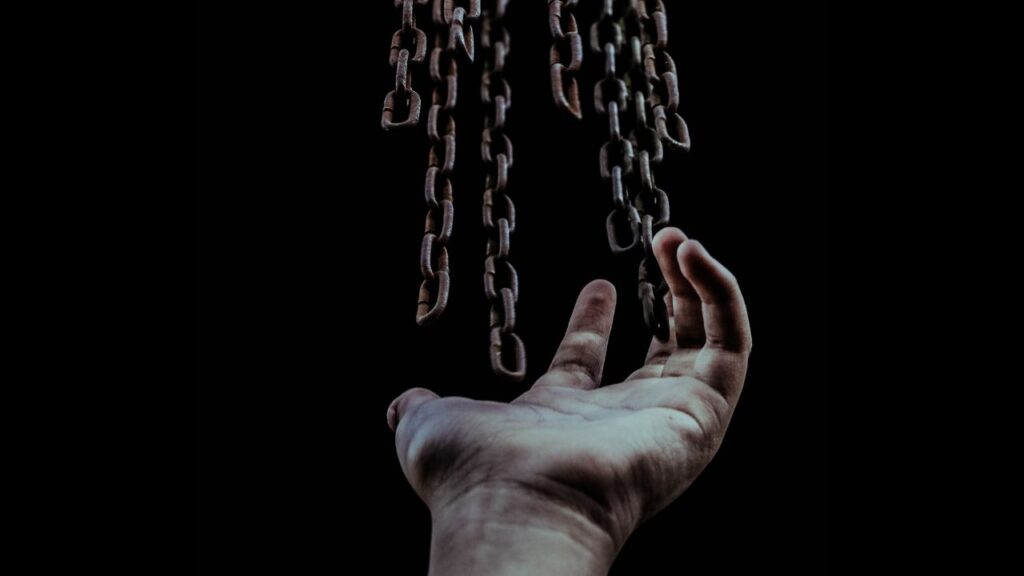With a million babies born each year, Kenya’s annual diaper consumption is estimated at 800 million pieces. The government considers them “essential items” and has lately been encouraging manufacturing firms to set up shop in the country to supply the East African region. As of June 2021, the country had a total of seven diaper firms which were allowed to import manufacturing materials, largely plastics, duty-free.
However, there has been much less attention paid to where the diapers end up. One group of researchers found that in Kenya, as in many developing countries, “it appears that little information is available regarding handling and the proper disposal of disposable diapers despite a significant rise in usage of such during the last decade by women of child bearing age”.
As a result, diapers are contributing to a dramatic increase in plastic pollution, one that has raised concerns in government and in Kenya’s mainstream media. By 2013, the Department of Public Health was warning that poor disposal of diapers was a leading cause of disease as well as blocked drainage in major urban areas. And the problem is intensifying as diapers become cheaper and mothers in rural Kenya gravitate to them for their convenience. In fact, around the world, disposable diapers represent about 4 per cent of all solid waste and are the third largest contributor to single-use consumer items in landfills.
***
When my neighbour Esther was expecting her fourth child a few years ago, she took a ride with me into Nakuru town to buy supplies in anticipation of the happy event. On her shopping list were washable nappies. I have since learned that among her peers, Esther is the exception; the vast majority of mothers here have adopted the disposable diaper.
We live on the edge of a small township in Nyandarua County that boasts a health centre complete with a maternity wing. Our local minimarket, a family-run business, stocks most of the diaper brands available in Kenya, from those targeting the young mum living in Nairobi’s leafy suburbs, to those made specifically for the mother who earns a KSh250 daily wage selling her labour to neighbouring farms or ekes out a living selling vegetables or second-hand clothes at our local market. Competition among manufacturers and importers of baby diapers has drastically reduced prices. Local producers have also adapted to the kadogo economy, selling individually wrapped baby diapers for as little as KSh20 apiece.
The Clinical Officer at our health centre informs me that, on average, the maternity wing delivers 250 babies a year. Alice, who runs the minimarket and who is herself a mother of twins, told me that before they were toilet-trained at just over two years old, her bundles of joy were using up to six diapers each per day. The math is very worrying; it will take about 20 generations of Alice’s descendants for the diapers used by her children to decompose. Early 21st-century disposable diapers will finish biodegrading in 2500.
Washable nappies are not a choice for Alice, however. Not unless she is willing to finish a 14-hour day with her hands deep in a bucket of soiled nappies. Alice tells me that, unlike in the past, women employed by families to take care of babies and young children have become accustomed to the convenience of diapers and are no longer willing to take on the additional task of washing soiled cloth nappies.
Our little township borders the Aberdare Forest, which has become a dumping ground for soiled diapers. I became aware of the dumping after I found mounds of used diapers on a piece of fallow land adjacent to my property. Worried that I would soon find myself living next to a growing garbage dump, I determined to find out the source of the dumping. Ours is a small community and my enquiries led me straight to the offending mother who, challenged, complained that her children had not done as they had been told; she normally dumps her used diapers in the forest when she goes to gather firewood, so she told me. A stroll into the forest confirmed that, indeed, our forest was being used as a dumping ground for diapers. One pile had been left so perilously close to the river that come the rains, it would soon add to the growing menace that is river pollution by diapers.
But why was this happening?
A Department of Health official attached to our local health centre told me that the problem was directly linked to inadequate resources and personnel. Solid waste management falls under the Department of Health Services of the Nyandarua County Government. For the 2019/2020 fiscal year, the approved budget allocation “to ensure the controlled disposal of solid waste and human remains” within the entire county of 638,289 people was KSh7,603,000, projected to rise to KSh8 million for the 2021/2022 fiscal year. Nyandarua has four sub-counties: Kinangop, Kipipiri, Ol Joro Orok and Ndaragwa.
Ndaragwa Sub-County covers a total surface area of 653 km² and has four wards: Leshau, Kiriita, Central and Shamata with a total population of approximately 92,626 people. The sub-county is served by one of only three garbage trucks owned by the county government. The truck collects waste from our township once a week and takes it 60 kilometres away to the municipal dump at Ol Kalou, the county capital. However, frequent breakdowns and lack of fuel mean that we can go weeks without having our garbage collected. And since the county government’s budget has not stretched to refuse bins, residents resort to digging pits into which they throw their household waste, consisting mostly of plastic wrapping, plastic bottles, torn shopping bags, and the now ubiquitous disposable face masks. The single-use plastic bags that were banned by the government in 2017 are also sneaking their way back into the environment, used by unscrupulous butchers as packaging. A visit to our local slaughterhouse is enough to put you off your meat; bits of plastic show up in the guts of the carcasses of goats and cows that have been grazing in our public spaces.
The accumulating mounds of rubbish are set alight, releasing toxic fumes into the air. Used diapers, however, are notoriously difficult to burn; you need a lot of kerosene. So where do they end up? In our surrounding environment, of course. Soiled diapers are rolled up and dumped in ditches and on open ground under cover of darkness, to be torn open by stray dogs and picked over by fowl let loose. More fastidious mothers pay people to dispose of them in the bush or, like my neighbour, take them there themselves.
When I asked about the options open to those living in areas without waste collection services, on farms and villages deep in the countryside, the Department of Health official told me that they are encouraged to bury soiled diapers on their land, thus introducing the concept of landfill to individual households. As for the mounds now festering in our forest, the official told me that it would be up to the forestry department to clear up the waste since it had been dumped within their jurisdiction.
A call to the local office of the forest service made it clear that the answer was not that clear-cut; the official I spoke to informed me that the matter had been raised with the local administration through the chief’s office and a solution was awaited. He did not sound hopeful.
Manufacturers of disposable diapers give very clear instructions about how to use them and warn parents to keep the packaging out of the reach of children because of the danger of suffocation. I found only one that specifically urged users not to throw soiled diapers into the toilet but to put them out with the trash instead. Bizarrely, this manufacturer also encouraged the user to return the plastic packaging to the company’s offices in Nairobi. None advised against throwing them out into the environment where they add to the growing volume of human faecal matter and the attendant pathogens. And nor were users encouraged to empty the waste into the toilet before disposing of diapers.
This lack of information means that there is a lack of awareness among the population as to the true cost of opting for disposable diapers; many mothers only see the advantages of using them, complaining only that they are difficult to burn. None that I spoke to knew that their used diapers would take centuries to biodegrade, and that they are polluting our sources of water.
This story is not unique to Nyandarua County, however. Residents in the urban areas of Kisumu County have also taken to disposing soiled diapers in the environment in the dead of night. The situation is no better in Kilifi County where in June 2019 the Chief Officer for Environment and Natural Resources, Mariam Jenneby, called for a total ban on single-use plastics and disposable diapers, saying that they were a major cause of ocean pollution.
Kilifi County’s solid waste management budget for the 2020/2021 fiscal year stood at KSh14,100,000 of which KSh5.1 million was for the purchase of a double-cabin vehicle for “environmental conservation and management extension services”. The rest would go to “fencing and rehabilitating” the Mariakani dumpsite, installing refuse bins in Mariakani municipality and purchasing assorted tools and equipment; no mention is made of recycling. The county has a population of 1,109,735 people (2019) and covers an area of 12,610km² — 2.17 per cent of Kenya’s total surface area.
On the other side of the country, in Kisumu County, whose population stands at 1,155,574 people spread out over an area of 2,086km², the budget allocation for solid waste management for the 2020/2021 financial year was KSh3,190,998, all of it earmarked for the purchase of goods and services; no mention is made of recycling. It is however observed in the document that the objective to “strengthen solid waste management in Kisumu County” has been met, and that effective planning, management and execution of service delivery outcomes are at 100 per cent. The residents of Kisumu tell a somewhat different story, however.
There is no objective reason to believe that the situation of solid waste management in the other 44 counties of Kenya is any different. On the contrary, it would appear that the 2015 National Solid Waste Management Strategy developed by the National Environment Management Authority (NEMA), and whose main guiding principle is “Zero Waste”, remains a dead letter. The short-term goal of the strategy is to “achieve approximately 80% waste recovery (recycling, composting and waste energy) and 20% landfilling in a Sanitary landfill (inert material) by 2030” but as observed above, the budget allocations for Nyandarua, Kisumu and Kilifi do not cater for the cost of recycling.
And while it is a fact that most solid waste is generated in urban areas, disposable diapers have made their way into the rural areas where, as observed, they are playing havoc with the environment.
At its unveiling, the Constitution of Kenya 2010 was hailed as among the most progressive world-wide for addressing issues that are seldom addressed by national law. Indeed, Article 42 of the constitution recognises the right of every person to a clean and healthy environment while Article 69 provides the obligations of the state in this regard that include the obligation to “eliminate processes and activities that are likely to endanger the environment”.
Diaper manufacturers were among the beneficiaries of the decision announced by Treasury Cabinet Secretary Ukur Yattani in his June 2020 budget to remove import duty on inputs in order to boost local manufacturing and create jobs. But even as the government incentivises manufacturers and encourages investment in the production of a highly polluting product, there is no policy in place on how to manage the growing waste resulting from the increased use of disposable diapers.
Barely two decades ago, single-use diapers were alien to the majority of Kenyan mothers; they should have remained so. By incentivising the production and imports of disposable diapers under the guise of creating employment and using the argument that “Baby diapers are essential products and there is a need to supply them at affordable prices,” the government has not only failed in its constitutional obligation to deter activities that are a menace to the environment, but has also needlessly compounded the challenges of solid waste management in the country.
Moreover, Kenya has squandered the reputational capital earned with the 2017 ban on plastic carrier bags. By resisting the introduction of disposable diapers — one of the biggest contributors to plastic waste globally — Kenya could have taken the lead in halting the progression of a disposable diaper pandemic that began in the United States over 70 years ago. Every minute, 300,000 more diapers are released into the environment that could be replaced with compostable nappies, for example. However, the adoption of an alternative to the disposable diaper would require the full commitment of governments and manufacturers.
The second part of Article 69 of the constitution states that “every person has a duty to cooperate with State organs and other persons to protect and conserve the environment. . .” However, both the national government and the county governments have failed to take the lead and it has been left to youthful civil society organizations such as the Kenya Environmental Action Network (KEAN) to raise awareness regarding the polluting effects of the disposable diaper. In September 2021 KEAN partnered with Kisumu Environmental Champions — who describe themselves as “a group of kids, teenagers and youths from Kisumu County working on Environmental education and Climate Action” — to organize a “climate strike” where they called for a ban on plastic diapers and plastics in general.
The recently concluded United Nations Environment Assembly (UNEA) issued a resolution calling on UN member states to “continue and step up activities and adopt voluntary measures to combat plastic pollution, including measures related to sustainable consumption and production, which may include circular economy approaches.”
In the absence of such measures, youthful Kenyans are stepping into the breach, too keenly aware of the environmental future that awaits them if no action is taken. LeafyLife is a Kenyan start-up that is using Green Chemistry to recycle waste diapers and sanitary pads sustainably. Using a circular economy approach, the social enterprise has developed a chemical process that recycles the waste into a fuel gel that lasts 10 per cent longer than kerosene, emits 76 per cent less carbon dioxide, and no carbon monoxide, smoke or soot.
LeafyLife was founded by a trio of graduates from the Department of Chemistry of the University of Nairobi who were moved to act in 2019 when they became aware of the threat posed by discarded disposable diapers. Peter Gachanja, Denis Muguta and Melvin Kizito received recognition for their innovation on the occasion of the Global Sustainable Chemistry Week organized by the International Sustainable Chemistry Collaborative Centre (ISC3) in Frankfurt am Main, Germany, in November 2021.
But can initiatives such as LeafyLife become successful without the development and implementation of a robust framework that actively encourages local innovation in the field of solid waste management? The global baby disposable diaper industry was valued at US$43 billion in 2020 and continues to grow. Without decisive government action, and if the UNEA call for an end to plastic pollution remains another dead letter, the industry will continue to thrive and a product designed to lessen the burden of caring for a toddler will continue to generate waste that will become that child’s legacy. And the legacy of that child’s descendants for many generations to come.








